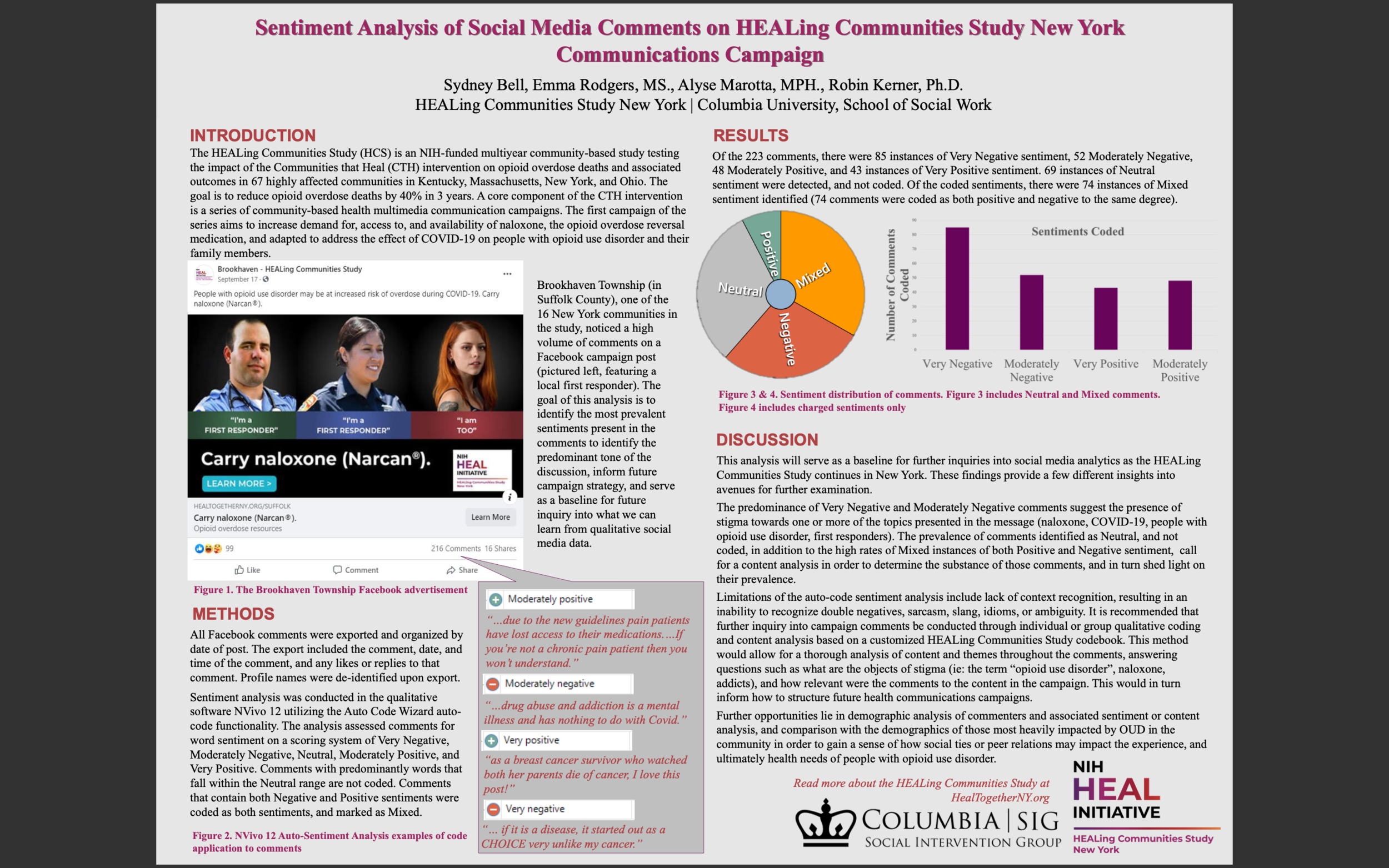Sentiment Analysis of Social Media Comments on HEALing Communities Study New York Communications Campaign
Video
Team Information
Team Members
Sydney Bell, Research Coordinator, Social Intervention Group, Columbia University School of Social Work
Emma Rodgers, Program Manager, Social Intervention Group, Columbia University School of Social Work
Alyse Marotta, Coordinator of Community Based Programs, HEALing Communities Study
Robin Kerner, Senior Project Director, Social Intervention Group, Columbia University School of Social Work
Abstract
The purpose of this analysis was to investigate the sentiment of user comments on a Facebook campaign post in Brookhaven Township, New York, as part of the HEALing Communities Study, in order to determine the tone of discussion and serve as a foundation for future investigation into community attitudes, stigma, and how social media data can be used to inform them. The HEALing Communities Study (HCS) is an NIH-funded multiyear community-based study testing the impact of the Communities that Heal (CTH) intervention on opioid overdose deaths and associated outcomes in 67 highly affected communities in Kentucky, Massachusetts, New York, and Ohio, with the goal of reducing overdose deaths by 40% in 3 years. A core component of the HCS intervention is a series of community-based health communication campaigns, the rst of which had the aims of addressing COVID-19’s effect on People with Overdose Use Disorder (POUD) and their families, and increasing the demand, access to, and availability of Naloxone, the opioid overdose reversal drug. The campaign post at the focus of this analysis featured first responders, and the copy “People with opioid use disorder may be at increased risk of overdose during COVID-19. Carry naloxone (Narcan®)”.
This analysis is intended to serve as a basis for which to both inform future health communications campaign strategies, and launch further research and inquiry into the social media data from the study, and what it can tell us about the tenor of the opioid epidemic, and stigma associated. Facebook comments were exported from the advertisement, along with post data such as comment date, time, likes, and any replies to that comment. Sentiment analysis was completed for individual comments utilizing the Auto-Code function in NVivo 12, which assessed comments for the presence of sentiments on a scoring system of Very Negative, Moderately Negative, Neutral, Moderately Positive, and Very Positive. The most frequently occurring sentiment was Very Negative, followed by Moderately Negative and Moderately Positive, respectively. Limitations include the singularity and context limitations of NVivo analysis, which is unable to pick up conversational contexts such as sarcasm or slang. It is recommended that further inquiry into the content of comments be conducted through individual or group qualitative coding based on a study-specific codebook.
Contact this Team
Team Contact: Sydney Bell (use form to send email)


